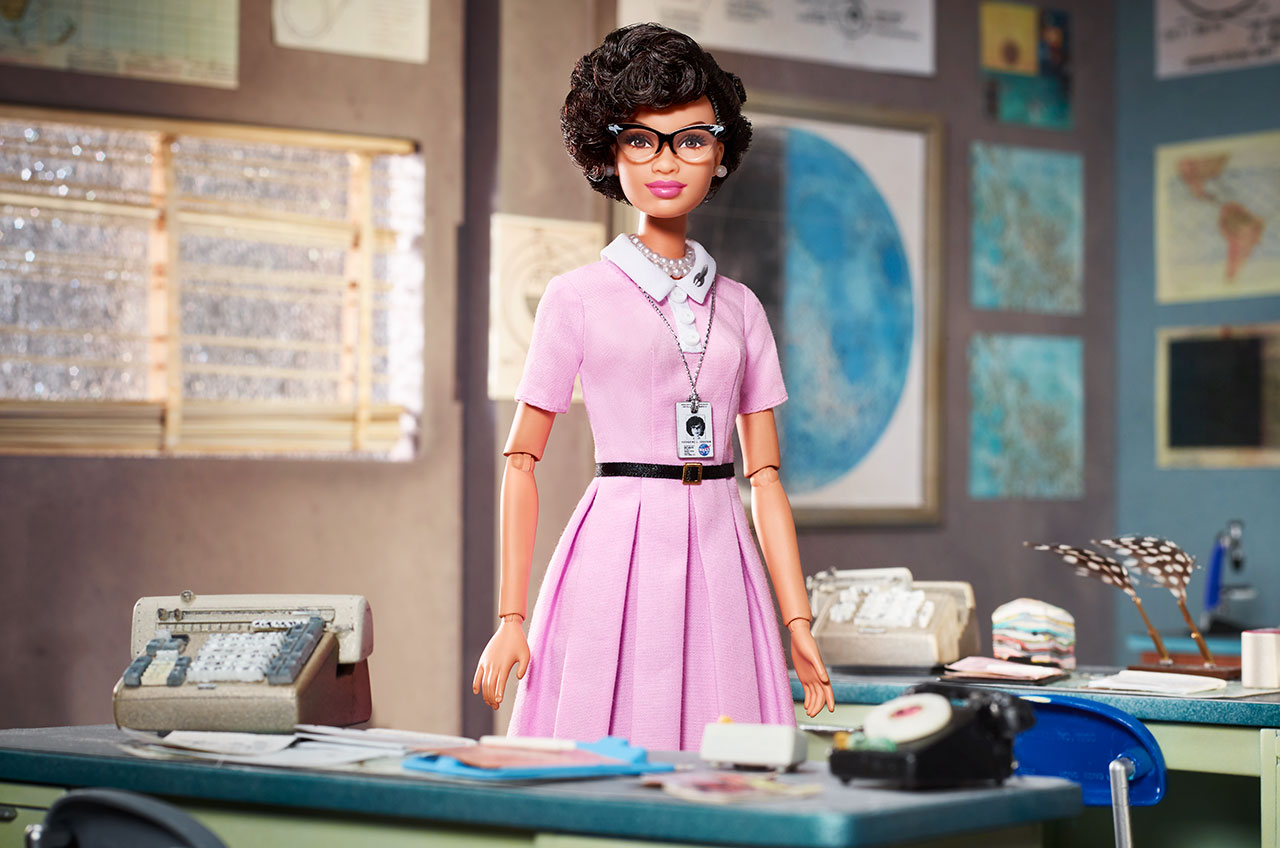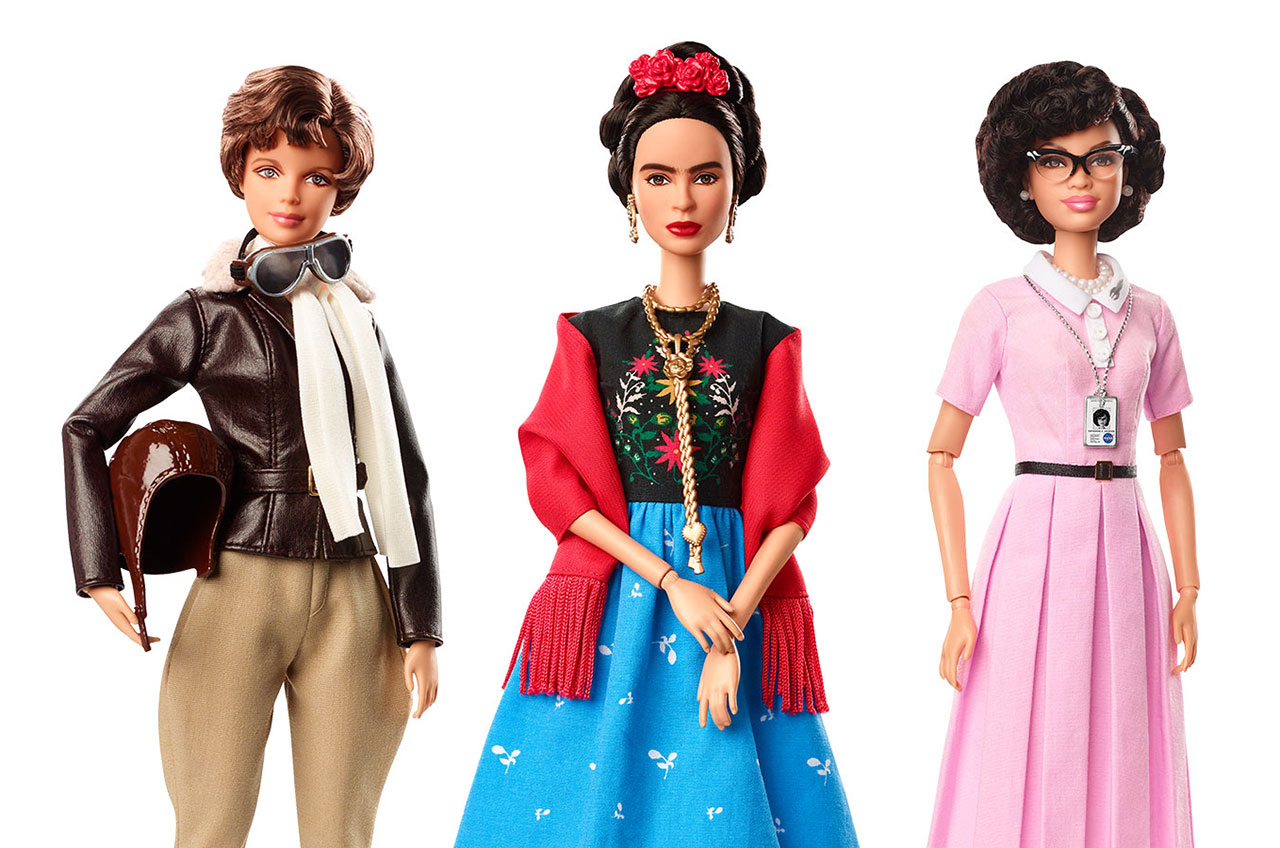Barbie Models Doll After NASA 'Hidden Figure' Katherine Johnson

A once-"hidden figure" from NASA's history is being celebrated by one of the most well-known toy lines in the world.
NASA mathematician Katherine Johnson, whose real-life experience as an African American "human computer" was depicted in the 2016 movie "Hidden Figures," is among the first three historical figures to be honored in Barbie's "Inspiring Women" doll series.
The new line, revealed on Tuesday (March 6) ahead of International Women's Day on Thursday (March 8), will come packaged with educational information about the contributionse ach woman in the series made to society and their respective fields. The Barbie Inspiring Women Katherine Johnson doll honors "the achievements of a pioneer who broke through barriers of race and gender," said Mattel. [On 'Hidden Figures' Set, NASA's Early Years Take Center Stage]
"We know that you can't be what you can't see. Girls have always been able to play out different roles and careers with Barbie and we are thrilled to shine a light on real life role models to remind them that they can be anything," Lisa McKnight, senior vice president and general manager for Barbie, said in a statement.
Johnson, now 99, began work at what would become NASA's Langley Research Center in Hampton, Virginia in 1953, when she joined a pool of African-American women whose role it was to be the computers for the National Advisory Committee for Aeronautics (NACA), the predecessor agency to NASA. Johnson and her colleagues performed the mathematical equations and calculations needed by the engineers to advance their aeronautical work.
Eight years later, in support of the United States' early human spaceflight program, Johnson calculated the trajectory for Alan Shepard, who was the first American to fly in space on May 5, 1961. Even after NASA began using electronic computers, John Glenn requested that Johnson re-check the machine calculations before he launched to become first U.S. astronaut to orbit the Earth in 1962.
Johnson continued to work at NASA until 1986, combining her talent for math with her computer skills. Her trajectory calculations proved as critical to the success of the Apollo moon landings and start of the space shuttle program as they were for those early steps on the United States' journey into space.
Get the Space.com Newsletter
Breaking space news, the latest updates on rocket launches, skywatching events and more!

Johnson worked closely with Barbie designer Kelley Lindberg to ensure complete authenticity of her doll. The Barbie Inspiring Women Katherine Johnson includes her glasses, NASA badge, earrings and necklace. Available for pre-order now for $29.99, the doll will go on sale on May 10.
Barbie is also introducing dolls modeled after Amelia Earhart, the first woman to fly across the Atlantic Ocean, and artist Frida Kahlo, whose portraits and works were inspired by the people and artifacts of Mexico.
In addition to the Katherine Johnson doll highlighting the role of women at NASA, Barbie's Careers line includes an Astronaut and Space Scientist set, which include one spacesuit-clad doll and another in a white lab coat. The first Barbie astronaut outfit, "Barbie Miss Astronaut," was released in 1965.
Another of Mattel's doll lines, American Girl, has also recently focused on space exploration with the introduction of its 2018 Girl of the Year, Luciana Vega, an 11-year-old of Chilean descent who won a scholarship to Space Camp and dreams of being the first person to fly to Mars.
Johnson's Barbie doll is the latest honor for the mathematician. In 2015, she was bestowed the nation's highest civilian award, the Presidential Medal of Freedom. A year later, NASA dedicated its computational research facility at Langley Research Center in her name.
See more photos of Mattel's Barbie Inspiring Women Katherine Johnson at collectSPACE.
Follow collectSPACE.com on Facebook and on Twitter at @collectSPACE. Copyright 2018 collectSPACE.com. All rights reserved.
Join our Space Forums to keep talking space on the latest missions, night sky and more! And if you have a news tip, correction or comment, let us know at: community@space.com.

Robert Pearlman is a space historian, journalist and the founder and editor of collectSPACE.com, a daily news publication and community devoted to space history with a particular focus on how and where space exploration intersects with pop culture. Pearlman is also a contributing writer for Space.com and co-author of "Space Stations: The Art, Science, and Reality of Working in Space” published by Smithsonian Books in 2018.In 2009, he was inducted into the U.S. Space Camp Hall of Fame in Huntsville, Alabama. In 2021, he was honored by the American Astronautical Society with the Ordway Award for Sustained Excellence in Spaceflight History. In 2023, the National Space Club Florida Committee recognized Pearlman with the Kolcum News and Communications Award for excellence in telling the space story along the Space Coast and throughout the world.











